One of the best ways to find usable copyrighted works, especially images, is to find someone who wants to share their work under a Creative Commons license. Since 2002, Creative Commons has been giving creators a way to share their work without having to relinquish copyright or individually license their work. These licenses have provided the public with the ability to use works under set circumstances without needing to pay for a license or pass along royalties.
Unfortunately, most people don’t know what all these little icons mean and how the licenses work. This has led to challenges for creators who find their work being used in ways not intended, as well as users who pluck out a work and use it only to find that the creator is unhappy and seeing a DMCA Takedown. Neither situation is ideal and is contrary to what the creators of the Creative Commons license program set out to do.
Many people who find works that are covered by one of the following license want to do right and not upset the original creator of the work. Few people purposefully ignore a license and just do whatever they wish. But what do the little icons mean? And once I understand the icons, are there certain rules I need to follow?
Key things to know:
- Every Creative Commons license requires giving appropriate credit. It’s important to understand this, and to also know what this phrase “appropriate credit” means.
- A Creative Commons licensor (the person granting you the license) may not revoke your license so long as you are following the terms of the license. This is often a sticking point because many do not provide credit as required.
- There are 6 Creative Commons license and they apply worldwide.
- The license, once granted, lasts as long as the copyright on the work so long as the license is used properly.
Note: These specifically reference Creative Commons 4.0, but the explanations also apply to prior versions.
Attribution Only– This one is likely the most straightforward of all the Creative Commons licenses because it’s the one they all build from. This license requires anyone who uses the copyrighted work to provide “appropriate credit” AND indicate what, if any, changes were made. In plain English, it means you have to give credit. According to the Creative Commons the credit must be in a certain way. Interesting that this is one of the most broad categories but most people actually get it wrong.
Creative Commons defines “appropriate credit” as (a) the name of the creator and attribution parties, (b) a copyright notice, (c) a license notice, (d) a disclaimer notice, and (e) a link to the material.
Once you understand that then you can do whatever else you wish with the work, regardless of whether it is for commercial, non-commercial, non-profit, educational, internal purposes at work, etc. Doesn’t matter how you use or distribute the work, give credit and say how you’ve changed the work and you’re good to go.
In reality, though, what I usually see is a “photo courtesy of” remark with a name. Sometimes the name is hyperlinked to the original work, but not always. And, to be honest, I don’t think I’ve ever seen a use where the user indicated what changes they made.
Bottom Line: every CC license user needs to get better at giving credit!
Attribution, ShareAlike – This license is often confusing to many people. It carries with it all the same flexibility as the Attribution Only license but it brings along with it the rights YOU have to give to YOUR new work. In plain English, this license means that once you complete your changes to the underlying work then your new work, when shared, carries with it the exact same license and you can not prohibit others from changing or sharing your work. This license is the foundation for the idea of open-source works where various people “improve” upon others work. It’s like hitting the ‘Save’ instead of the ‘Save As’ button.
Attribution, No Derivatives – This license is kind of the opposite of what you can do with the Attribution Only license. You have to give credit, or used in the Creative Commons license “appropriate credit”, but you can’t change the work in any way. Want to crop it? No. Lighten it up a bit? Nope. Make it black and white? Again, No. In plain English, this license means you can use the work for ANY – commercial, non-commercial, educational, work, gaming, or what have you – purpose, so long as you provide the license-required credit and not alter the work in any way.
Attribution, Non-Commercial – This license is a little trickier because there is no clear definition of what “commercial” means as far as Creative Commons licenses go and thus “non-commercial” is not as black and white as you may think. Under the Creative Commons license, “commercial” is defined as “primarily intended for commercial advantage or monetary gain”. When Creative Commons licenses were created we didn’t have the concept of social media sharing that we do now. The value placed on posting photos on social networks may be to gain a commercial advantage in the form of likes or pins or tweets, etc. It hasn’t been further defined from when the original understanding of commercial advantage had a decidedly different paradigm than it does now.
Of course, as with all Creative Commons licenses, with this one you must provide attribution, as defined by the license. However, you are able to add to, modify, change, etc., the underlying work so long as YOU are not doing it in a commercial way. THEN if you were to share or distribute the work you may only do so in a non-commercial manner. Put that in to plain English, please!
We’ve got a number of things going on here.
A – provide attribution
B – you changing the underlying work in a non-commercial way
C – you sharing the new work in a non-commercial way
D – licensing the new work
So let’s tackle these separately.
A – provide attribution. That’s easy enough, you’ve got this! (Note: see above)
B – you changing the underlying work in a non-commercial way. If you plan to make changes you can not do it in a commercial manner. Obviously, that means you can’t charge for your work. This is important if you’re a designer and need to create something for a client or if you work in-house and are modifying something for use within your own organization. Those are obvious “commercial” activities – getting paid for your work. While it would only be speculation, as there is no case law or commons commentary, as to whether “in kind” compensation would amount to “commercial” if you’re not normally in the business of charging or being paid for your work. But, for the most post, I don’t think this is the sticking point with this license, it’s the next part.
C – you sharing the new work in a non-commercial way. Obviously, you can’t put it up for sale or charge clients for this new work. But can you ask for donations but make it available whether or not someone gives? Can you include it on your website where you have ads, affiliate links, and/or other paid business relationships? Can you include it on your website if your website is basically an advertisement to hire you? These are all gray areas and if a problem arises you’d need to deal with it on an individual basis. The difficulty is that just because one creator may see a means of sharing as commercial doesn’t mean others necessarily do.
D – licensing your new work. You may attach any Creative Commons license you wish to the new work. This may seem crazy. You can’t sell your new work, but you can license it to someone else (for no money) and they can use it for either commercial or non-commercial purposes. That doesn’t sound right, does it? You can’t make money off the new work, but someone else can. But, yes, that’s exactly what this means.
Attribution, Non-Commercial, and Share Alike – Now that we’ve established the basics, this one starts to put them together. This one makes a change from the prior Attribution, Non-Commercial and adds on the Share Alike license.
Again, in plain English it’s the same as the prior license except when it comes to how YOU share the new work. The new work MUST be licensed in the same manner as the work you started with. So, since you started with an “Attribution, Non-Commercial” license you must license your new work in the same way. Whereas with the “Attribution, Non-Commercial” you can license your new work as either commercial or non-commercial, with this Share Alike license you may not provide a different license on your new work than you had on the underlying work. It’s that idea of fairness, really.
Attribution, Non-Commercial, No Derivatives – Basically, with this license all you’re able to do is share the work. Of course, you must provide “appropriate credit”, but you can not modify the work in any manner then distribute it even if the distribution is not for commercial gain. With this license, all you’re allowed to do is share it for free with other people and in doing so give credit to the original creator.
Added 2/15/14:
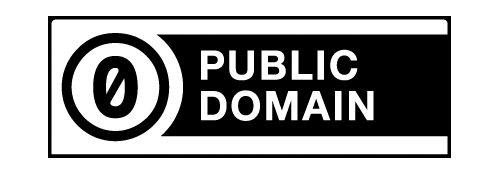 Public Domain (CC0) – I had a number of people ask me about public domain works. While that’s a separate discussion, I want you to know there is a Creative Commons designation (CC0 1.0 Universal) for works someone wants to place in the public domain. Since the assumption is all works are subject to copyright unless otherwise designated or known, if a creator wants to make their work available without any restrictions they can add what is called the “CC0” or “CCZero” designation. A work that carries this designation has “No Rights Reserved” and is free of copyright restrictions, and likely other restrictions (i.e., moral, publicity, and privacy rights). This is a very broad designation and it is clearly understood within the Creative Commons community that no work carries this designation unless it is explicitly marked as a CC0 work.
Public Domain (CC0) – I had a number of people ask me about public domain works. While that’s a separate discussion, I want you to know there is a Creative Commons designation (CC0 1.0 Universal) for works someone wants to place in the public domain. Since the assumption is all works are subject to copyright unless otherwise designated or known, if a creator wants to make their work available without any restrictions they can add what is called the “CC0” or “CCZero” designation. A work that carries this designation has “No Rights Reserved” and is free of copyright restrictions, and likely other restrictions (i.e., moral, publicity, and privacy rights). This is a very broad designation and it is clearly understood within the Creative Commons community that no work carries this designation unless it is explicitly marked as a CC0 work.
Thank you for reading all the way through this. I know it’s a lot, but I hope you now have a better understanding of what all these licenses mean. Does this help you better understand how to use Creative Commons work? Do you feel more confident that your work will be used as you intended?

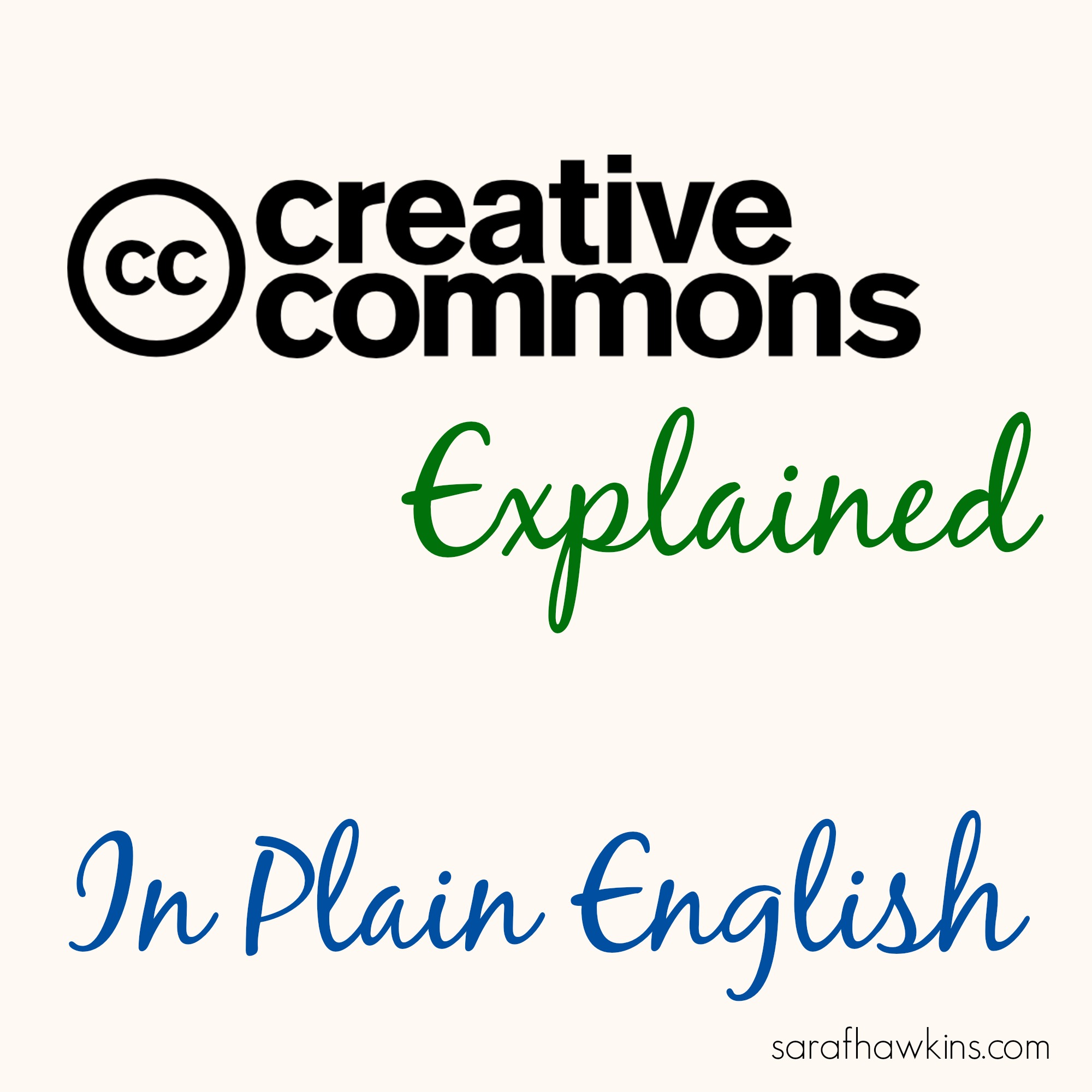


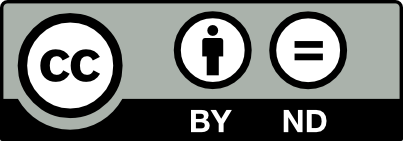



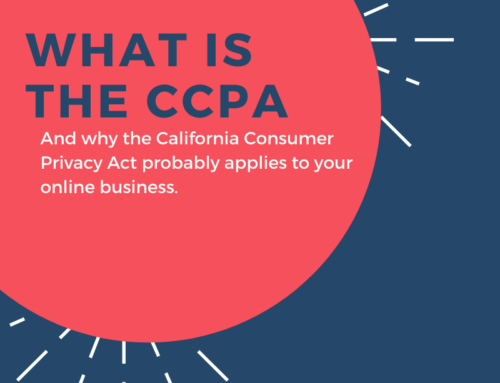
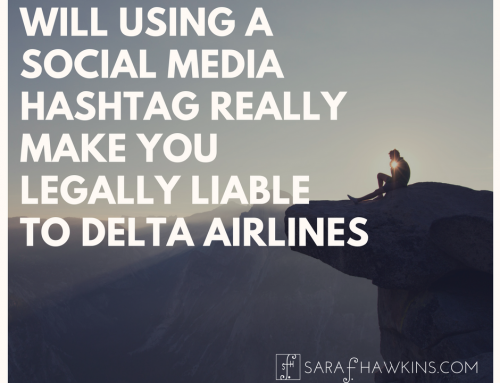


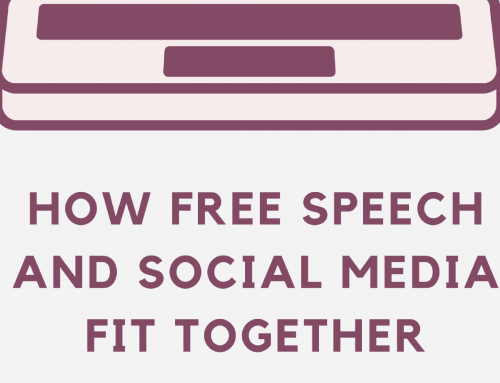
[…] Look no further than this guide to what the Creative Commons Licenses mean for you as the user and as the creator. And it's done in plain English! […]
[…] Creative Commons Licenses Explained In Plain English – – Sara Hawkins at sarafhawkins.com […]
[…] image above is posted on Flickr as Creative Commons. It’s available for use by others, as long as there is attribution and it’s not […]
[…] you can read more about Creative Commons in plain English and while you’re mastering the fine points, these should help you understand the advantages […]
[…] Creative Commons Licenses Explained In Plain English – Sara Hawkins at sarafhawkins.com […]
[…] “Look no further than this guide to what the Creative Commons Licenses mean for you as the user and as the creator. And it's done in plain English!” […]
[…] Want to find useable images? Take a tip from Sara Hawkins! […]
[…] Then there are the more ambitious content creators who actually incorporate the footage from their selected films into their reviews, claiming that they’re using the clips under a Creative Commons License. However, I seldom see anyone incorporate the license as discussed in Sara Hawkins’ blog “Creative Commons Licenses Explained in Plain English.” […]
[…] [2] Hawkins, S. F., (nd).Creative Commons Licenses Explained in Plain English. Retrieved on September 9 from https://sarafhawkins.com/creative-commons-licenses-explained-plain-english/?utm_source=www.inbound.or… […]
How are we supposed to note the changes being made?
What if I slap in a few random Photoshop filters and a few random text on it. Can I just say ‘Photo credit: Sara Hawkins / CC BY-SA 3.0, Flicker | Modified by Me’?
And can I watermarked the new work after that? Say ‘Me CC BY-SA 3.0’ on the corner. Are we allowed to do that?
[…] this segment, we took a dive into Creative Commons, which Sara has explained in plain English on her blog. We also talked about best practices for crediting photos (use their name, don’t […]
Thank you.
I was confuse about CC0 license. But now after reading this i am so relaxed.
Thanx once again and keep posting. 🙂
Hi, thanks for the nice article.The original creator of a certain “physical” product has licensed the design of the product under “Attribution, Non-Commercial, and Share Alike “. If somebody who has no access to the design document replicates the product (from a physical sample) is she breaking the terms of the license?
Hello Prakash,
The “Non-commercial” part of the license has me concerned. If the product is for sale commercially, the licensed used is potentially invalid which could then create further challenged down the line from other who want to use the design of this subsequent product. This is why using Creative Commons licenses is much more complex than most people know it to be.
Just because a “share alike” license is used doesn’t mean that the subsequent use is licensed as such. There is an agreement to do when using that type of CC license, but with copyright law vesting the copyright in the creator unless otherwise indicated there could be problems if the subsequent user does not explicitly designate the appropriate license.
These types of situations make it so important to have the right legal advice when using a license to create a product that may be intended for the public.
Hi Sara,
This is a great article, very informative. I would like to ask you something about the CC-BY SA license. If you are sharing the original work, with no alterations, then do you still have to apply a CC-BY SA license to that shared work?
Let’s say you share someone’s CC-BY SA 3.0 video on Vimeo. Could you share the original video under a normal Vimeo license (i.e., not CC-BY SA)?
John, the Creative Commons license will always stay with the licensed material. With the CC-BY SA the new creation would need to carry the same license, which may be different from the TOS license granted by a third party sharing platform (you mention Vimeo). Vimeo, though, in their TOS specifically addresses the use of Creative Commons licensed work by stating, “The foregoing licenses are in addition to any license you may decide to grant (e.g., a Creative Commons license).”. If all you want to do is share the work that is already on a third party sharing platform (ex. YouTube, Facebook, Twitter), it would be best to use the share functionality built into the platform since an appropriate license is included in use of the share functionality.
Thanks for this article, I have a question here. If I am using creative common licence content on my app and showing ads on it to get some revenue then will it be considered as commercial use? I am not selling any content on my app but just trying to earn money by ads on it.
The definition of ‘commercial use’ is very broad and is fact based and may depend on intent. Creative Commons does not specifically define what ‘commercial use’ means. However, running ads to make money could very well be interpreted to be a ‘commercial’ venture.
Hi Sara,
I have a photo on Flickr of a luxury hotel with an attribution-noncommercial-noderivs license. I just recently found it being used on Facebook in a post by the hotel itself from back in July of 2014. They credited my name but didn’t link to the original photo; instead they linked to another Facebook account that originally posted my photo. They also added a link to the hotel’s own website. Would this situation be considered commercial use and is this a case you think I should pursue? Thanks!
Hello David,
If you believe there is an unauthorized use of an image there are a number of options you can take. While Creative Commons does not specifically define ‘commercial’ or ‘noncommercial’ there are generally accepted definitions of both. In addition, attribution under Creative Commons is not specifically defined the Creative Commons website and wiki both provide examples of ideal and generally accepted attribution. Linking to an unaffiliated third party may be an indication that the user obtained the image not from the creator but from a third party, although that is just speculation since I don’t know specifically.
Without seeing the exact use it’s difficult to know if the use was commercial. You may wish to consult knowledgeable copyright counsel to determine what options you may have with regard to the specific use.
Best wishes,
Sara
Thank you for publishing this. It really helped me understand the Creative Commons licensing better.
I do still have one question though. Say I want to use a Creative Commons image on a physical product that will be marketed exclusively online. Is it enough to include credit on the product’s purchase page, or does the full credit have to appear on the physical product itself?
Thanks again!
Hi Matthew,
This is an excellent question. In a situation like this it’s best to reach out to the licensor and discuss it. It’s an excellent opportunity to ensure that they, in fact, do have the right to license the work. With so many instances of people uploading other people’s work, for a commercial venture you’d want to make sure you’re not on the wrong side of the law.
What you are facing is one of the gaps in the Creative Commons licensing. There is no detail in the licensing’s information how to do what you are asking. While it may seem straightforward in one sense, the actual application and compliance is key since use outside the license could expose you to unintended liability.
I have a website and it use the Attribution + ShareAlike licence. But i want to change it to Attribution + Noncommercial can i do it. How will it affect those who are already using the contents under the old licence.
Creative Commons licenses are irrevocable. The CC license can be ended and a new license applied, but the new license would not apply to prior users. The new license would only be applied to uses as of that time and later. The question, remains, though, would the user be able to prove which Creative Commons license existed at the time of obtaining the rights to use the work. Both parties would have to be able to provide proof of which license they’re relying on to support their assertions of whether the specific use was or was not covered by the appropriate license.
[…] man kan bruke uten kreditering, mens andre følger blant annet Create Common-rettigheter. Les her om Creative Commons og hva du må passe på. Bruker du bilder fra noen av disse nettsidene så er […]
Ms. Hawkins,
I am a public school teacher and have created an infographic using the information you provide here. Your wording is in simple terms that students can understand so is very usable by teachers to explain licensing.
I’m wondering if I could have your permission to use the information from this post in my infographic, so that I can distribute it to other teachers.
Thank you. This is very helpful!
[…] defined by Attorney Sara Hawkins, Public Domain Images (or images with a CC0 license) […]
Hello Sara,
Thanks so much for a very informative write up! It’s much appreciated. I’ve been using images from pixabay – many of which I alter. The images I used are marked as CC0 Public Domain. It says no attribution required. Do I still have to attribute the site? They do say it’s appreciated to put pixabay there?!
The other question I have is, what happens when a photographer decides to take the photo I used down and starts selling it? Shall I take a screengrap of the photo and license at the time of download? Would this be enough of a proof legally?
Many thanks
While Creative Commons licenses have legal requirements, the CC0 license is a public domain equivalent and any requirements attached are just suggestions. It’s always nice to provide attribution, but is not required for public domain works from a copyright standpoint. From a plagiarism perspective, passing off someone else’s work as your own is definitely never suggested.
How to prevent issues down the road? That’s always a challenge because someone could post another person’s work and list it as CC0. It happens more often than one would hope. Having some documentation of the how the work is designated and what due diligence was undertaken to ensure it was correct is always helpful.
Hi Sarah! I’m so thankful to have found your article! It answered almost all of my questions about creative commons.
I do have one bit of clarification needed though.
In the case of Public Domain (CC0), i see a lot of quotes/tips/facts being shared social media that uses these type of images and then they place their website name within that image. Is this really allowed? or are they just getting away with it?
Pat,
Any work that is in the Public Domain can be used in any way. If the work is transformed, it’s possible the additions to the work, if separately copyrightable, could be covered by copyright. However, if the additions are not separately copyrightable the no new protections are added. Using a CC0 image and overlaying random facts or a quote doesn’t change the fact that the work is still in the Public Domain. Hope this helps.
Hello!
If I take a CC0 picture from a public domain and put a vector (from a public domain) on it to modify the image. Can we copyright this image? As it will be used for commercial purpose and we do not want our competitors to copy it. (Which is actually happening.
US Copyright rights are only available to original works of authorship. Copyright rights can be extended to a new work only for those elements that are new and meet the threshold of ‘original work of authorship’. Public domain works can not later be registered in an attempt to gain copyright protection because (1) once the work has been placed into the public domain work is nearly impossible to change that designation, although with Creative Commons there could be some legal arguments if the creator was wanting to do that, and (2) a third party does not have the right to claim authorship of a public domain work for copyright registration purposes.
If a public domain work is modified the only copyrightable elements are those new original aspects. For example, if I were to take a public domain image of the sky and paint birds on it, perhaps I could claim copyright in the originally created birds. But I would likely not be able to claim copyright if I took a public domain image of the sky and pasted on public domain images of birds. I may have created something new by putting the two public domain works together but US Copyright law is not likely to recognize it under the legal standard of “original work or authorship”.
You may want to discuss this with a copyright attorney familiar with the complexities of derivative works and commercial use to better understand what protections you may or may not have.
Hi Sara,
This is a really useful page.
Question:
I use an audio sample (under Creative Commons Attribution) and creative a derivative work (hereafter my song) (giving due credit),
THEN
Some one uses my song in an app. Does this new user need to credit the creators of the audio sample that I used in my song?
OR
Do the just need to credit me (under whatever licence I use?
THANK YOU!!!
Ben
How a user of the work you created provide attribution will depend on the type of Creative Commons license you had and what type of attribution you were required to provide in your work. All Creative Commons licenses, at minimum, require attribution so it’s prudent that all works used should be provided attribution.
[…] Creative Commons Licenses Explained In Plain English – Sara Hawkins at sarafhawkins.com […]
[…] sites operate under what’s called a CC0 Creative Commons License. What does this mean? Well, it means […]
I was recently in Gatlinburg, Tn. Went to a T-Shirt place called Incredible Photos. They have an EBay store also. My daughter got a shirt with Carl from the Walking Dead on it with her picture on it also. Looks like they were standing together when the photo was taken. How is it legal for them to use celebrity images for this? Just curious.
If they have a license then it’s legal. If they don’t have a license, that raises other questions. TV shows license all kinds of things that the average consumer would likely have no idea is or is not licensed.
Thank you for helping me!
Hi and thanks for this, it’s really useful.
One confusion I have with Attribution-Share-Alike is this: say I take a photo on this license, crop it or otherwise alter it and put it within wider content that is sold (I’m thinking of online courses). Does the overall content need to be CC-BY-SA or can I retain copyright on that while marking the image as CC-BY-SA?
Many thanks
Btw when I say “take” a photo I mean use one I’ve sourced from somewhere.
All new works based on the underlying work will carry the same license, CC BY-SA, so any derivatives will also allow commercial use but will not allow the new creator to place restrictions on the use of the new work that would negate or limit the CC BY-SA license.
[…] Creative Commons Licenses Explained In Plain English – Sara Hawkins at sarafhawkins.com […]
thank you for great share
Hello,
I want to sell ebooks online.The author is deceased and the publishing company is defunct. Which license do I obtain?
Copyright in the US is the life of the author plus 70 years, generally. However, you’ll need to determine when copyright attached and if all the needed steps to ensure it’s validity and ongoing application apply to your situation in order to determine if the work is still covered by copyright.
It is really necessary reading it all till the end. I must say that the article is so important to have to follow. Thank you so much.
Hi Sara,
Thank you for writing this article. I have been wracking my brains about the commercial use of CC BY SA 3.0. For example, https://simple.wiktionary.org/wiki/Main_Page
If I use this dictionary as part of a script for a learning video, what am I obligated to “Share Alike”?
What if the images I use to compile the video are not compatible with CC BY SA?
I appreciate any insight you can share. thank you
“ShareAlike” under Creative Commons requires that you (1) provide attribution and indicate any changes made and (2) distribute your contribution under the same license. Using materials that are incompatible with the CC BY SA license can create liability if you are granting rights you do not have.
Hi Sara
Great Post
I have a Youtube Channel and have been making some videos on Powerpoint and Posting them on Youtube.
I have used some photos from Powerpoint and selected Creative Commons Only.
The Images have a tag down the bottom that states This Photo by Unknown Author is licensed under CC BY-SA.
Can I still use these images in Powerpoint Presentations and post them on Youtube? Or do I need some sort of permission?
Any Feedback would be much appreciated.
Cheers
Excellent question! If the author is unknown then there is no way to be sure that the copyright holder has actually granted the Creative Commons License. A third party can not license a copyrighted work, especially under Creative Commons, without explicitly having been granted permission from the copyright holder. An image like that should be reported and removed since the associated CC license is likely invalid, which use could be a very costly decision.
Hi Sara. I have been racking my brain about CCO license. I sometimes submit my illustrations to Pixabay, a popular website that shares CCO images, graphics. Recently I discovered that one of my illustration is being listed on a microstock website by someone I don’t know, unaltered. Does CCO restrict the sale of works without first updating, modifying, or otherwise incorporating new creative elements into the work?
What do you suggest that I do in this case, and in the future?
An item that is licensed as CC0 is essentially a public domain work because the author is not reserving copyright. Most stock/microstock websites require the person uploading to have the rights to the image so the website can obtain the required license/release. Even if a public domain work is updates/modified that does not necessarily create a new copyrighted work.
You may want to review the terms on the microstock website to determine if you should contact them and explain your situation.
Best of luck!
So, can a CC BY-SA 4.0 image be used in a video? I can add the attribution, but the link part wouldn’t be live. Is that permitted? Thanks!
In accordance with the BY-SA 4.0 license:
The ShareAlike (“SA”) element is found in two of the six CC licenses: BY-SA and BY-NC-SA. The ShareAlike mechanism is included in the version 4.0 licenses as follows:
If You Share Adapted Material You produce, the following conditions also apply.
You may not offer or impose any additional or different terms or conditions on, or apply any Effective Technological Measures to, Adapted Material that restrict exercise of the rights granted under the Adapter’s License You apply.
Hi Sara! I am trying to determine how to attribute an image that is “ Attribution-ShareAlike 4.0 International (CC BY-SA 4.0)” . I am using a graphic to create a wood sign product using a laser. It would be painted the same colors as the graphic and possibly a family surname added but would otherwise look just like the original image except physical instead of digital. How would I attribute this? Would I need to engrave the attribution on the product somewhere and if so, what should it say?
It’s always a challenge to add Creative Commons attribution with a physical product. If you can add the attribution to the physical product in some manner, that’s an option.